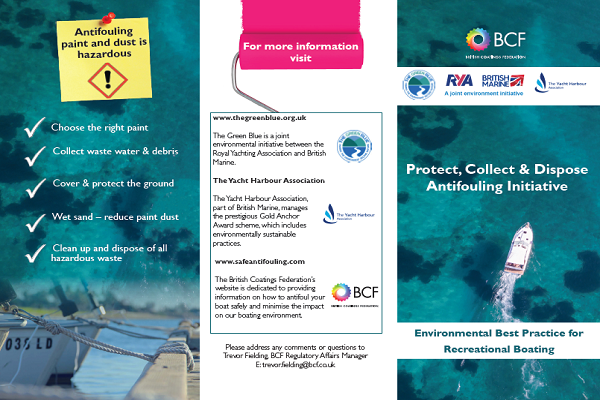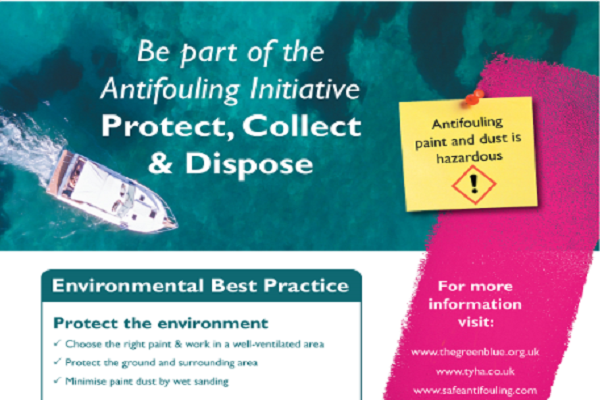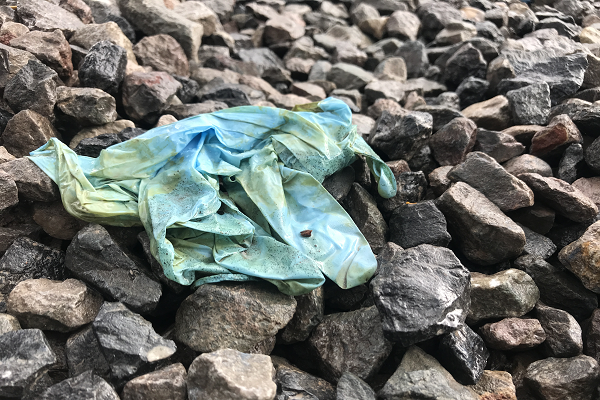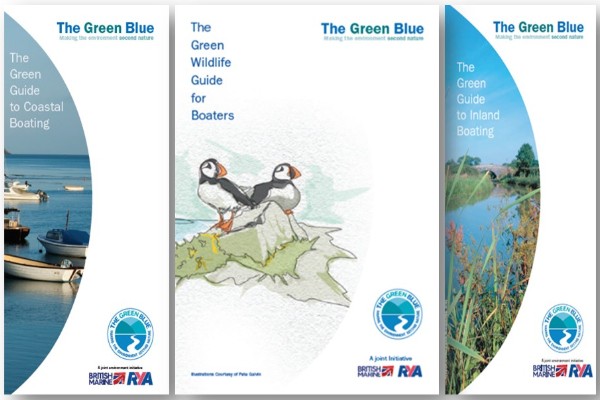Antifouling
WHAT IS THE ISSUE?
While antifouling does a great job of keeping our hulls clean, and even has some environmental benefits such as improving fuel efficiency and preventing the spread of invasive non-native species, it is toxic to aquatic life. Most antifouls are copper or zinc based. Some of the compounds found in these antifouls can accumulate in marine organisms, and can find their way into marine wildlife further up the food chain.
The majority of copper in antifouling enters the marine environment through leaching. However, concentrated amounts do enter the marine environment during the removal of antifouling paint, which occurs mostly by water blasting or mechanical scraping, and can form concentrated deposits on land and in the waters around our marinas, clubs, and centres.
Protect, Collect and Dispose Initiative
Building on the successful, award-winning DIY Safe Antifouling programme launched in 2017, the British Coatings Federation (BCF), The Green Blue (RYA and British Marine) and The Yacht Harbour Association (TYHA) have launched the ‘Protect, Collect & Dispose‘ initiative focused on environmental best practice when antifouling yachts and boats.
The initiative has set out environmental best practice and is intended for DIY antifouling as well as for marinas and boatyards who offer professional antifouling services. The guidance leaflet and poster can be downloaded at the bottom of this page.
WHAT CAN YOU DO?
Choosing an Antifoul
- Consider more environmentally friendly paints (such as low volatile organic compound paints) and non-biocidal coatings such as silicone, vinyl or ultrasonic technologies. If you are finding it difficult to decide what antifoul option to use, please visit our Choosing an Antifoul page for more information on the various types available.
- You can also ask around your boating community to see if anyone else is using or has used a more environmentally friendly antifoul technology to get feedback.
Cleaning Antifoul Paint Surfaces
The water from pressure-washing your boat is contaminated with the heavy metal biocides found in many antifoul paints. Best efforts should be made to collect this and ensure it is disposed of in hazardous waste. For example:
- Avoid powerspraying or doing any antifoul work close to or over drains as these might be surface water drains that lead directly out into the open water.
- Use portable bunding that can be brought out when your boat is being washed down. This might be a preferred option where space is limited on land.
- Use a marina or boatyard with a filtered wash-down system where available, that captures and filters antifoul contaminants from your runoff. Waste contractors then collect this contaminated residue and debris to be disposed of legally at hazardous waste facilities.
- Encourage your club, centre, marina or boat yard to install a filtered washdown system. Demand from members and customers can be effective in encouraging change. Visit our Environmental Facilities Map to find your nearest filtered washdown system.
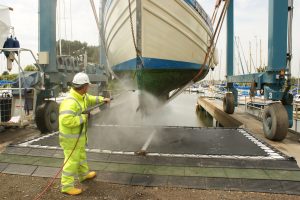
Removing Antifoul
- Always place a tarpaulin or groundsheet underneath the boat to protect the ground and collect contaminated antifoul debris.
- Wet abrade to minimise dust and clean the hull by wiping with a damp cloth.
- Industrial vacuum-cleaners linked to a scraper tool help to capture any dust.
- Avoid using paint strippers.
Applying Antifoul
- Use a groundsheet or tarpaulin to capture paint drips and drops. if these land directly onto the ground the heavy metals within the paint can be washed into local water courses and surface water drains.
- Use the correct application method for your paint – use a roller instead of a brush where possible as this minimises paint drips and gives your hull a more consistent finish.
- Protect yourself – use PPE and work in a well-ventilated area to prevent inhalation of toxic paint fumes and avoid paint coming into contact with your eyes, mouth, skin and clothing.
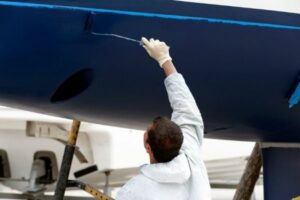
Disposal
- Ask for and follow marina, boatyard or club procedures regarding hazardous waste disposal
- All items that have been contaminated by paint are hazardous waste; dispose of carefully and legally at an approved disposal location e.g. local recycling centre or hazardous waste bins on site.
- Think about how to capture, transfer and dispose of waste paint and debris before starting the job.

